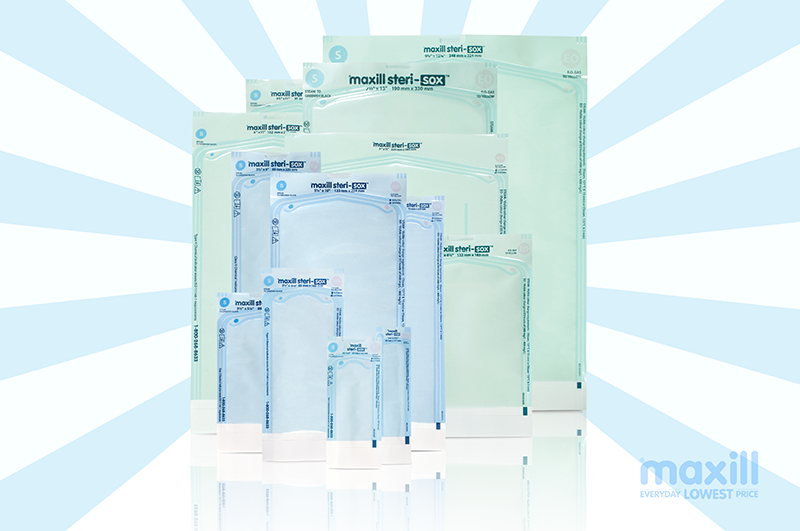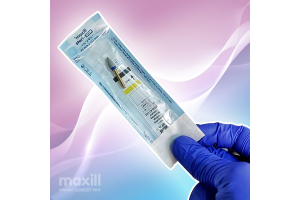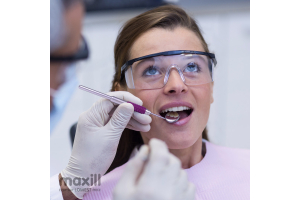A Key Component in Dental Instrument Reprocessing: Self-Sealing Sterilization Pouch

In the fast-paced and demanding environment of dental clinics, efficient and reliable sterilization of instruments is paramount to ensure patient safety and infection control. One crucial item that has revolutionized dental instrument reprocessing is the self-sealing sterilization pouch.
Components and Features:
A self-sealing sterilization pouch is typically made of a medical-grade, durable, and puncture-resistant material, often a combination of transparent polypropylene and medical-grade paper. These pouches come in various sizes to accommodate different instruments, from small dental items such as burs, handpieces, explorers to larger things such as forceps, rubber dam frames, instrument cassettes and more.
The pouch's design incorporates a self-sealing adhesive strip, which eliminates the need for manual sealing using heat or special equipment. The adhesive strip ensures an airtight and watertight seal once the pouch is closed, preventing any external contamination from entering and preserving the sterility of the instruments inside.
To enhance the sterilization process, most self-sealing pouches also feature indicators such as color-changing strips or markings. These indicators are sensitive to the sterilization process, changing color when the required conditions (e.g., heat and steam) are met. This feature provides a quick visual confirmation that the pouch has undergone successful sterilization.
Uses and Benefits:
Self-sealing sterilization pouches are a popular tool for sterilization in dental practices for various reasons:
Convenience: The self-sealing feature eliminates the need for additional equipment or time-consuming sealing processes. Dental professionals can simply load the instruments, seal the pouch, and proceed with the sterilization cycle, saving valuable time during their busy schedules.
Sterility Maintenance: The airtight and watertight seal of the pouch prevents recontamination of the sterilized instruments. This crucial feature ensures that dental tools remain sterile until they are ready to be used, safeguarding patients and practitioners alike.
Organization and Identification: The transparent front surface of the pouch allows for easy identification of the instruments inside, promoting efficient organization and retrieval. Additionally, most pouches have an area for labeling, enabling practitioners to mark essential details like the sterilization date and batch number, or easily place their pre-printed labels.
Versatility: Self-sealing sterilization pouches can be used with various sterilization methods, such as steam autoclaves, chemical vapor sterilizers, or ethylene oxide gas. This versatility allows not only dental clinics to choose the most appropriate sterilization method for their specific needs, but other professions as well.
Cost-Effective: As these pouches are disposable, they eliminate the need for maintenance and reduce the risk of cross-contamination. This cost-effective aspect makes them a preferred choice for dental practices of all sizes.
How Long Do Sterilized Pouches Last?
Proper storage of sterilized instruments is essential to maintain their integrity. They should be kept in a securely closing cabinet, drawer, or a designated area that is meticulously clean, free from dust, and dry. Handling of the instrument packages should be minimal to preserve their dryness and intact condition.
The shelf life of sterilized pouches largely relies on how they are stored and packaged, ranging from several weeks, some sources state a maximum of 96 weeks while others state indefinitely depending on how they are packaged. Specific packaging methods, like self-sealing sterilization pouches, blue wraps, and rigid containers, may have varying suggested shelf lives.
Check with the packaging manufacturer on recommended shelf life of their packaging. For the ‘indefinitely’ approach, the notion is that the package remains sterile unless the integrity of the package is compromised. That can certainly be said for any package no matter if it was sterilized that day or months ago! Proper inspection of the pouches is required prior to opening and using its contents. Any compromised pouch must have its contents returned for reprocessing.
How Should Sterilization Pouches Be Positioned In An Autoclave?
When using self-sealing sterilization pouches, it is crucial to consider how you load them into the sterilizers. Various sterilizers available have different bag orientations, which are specified in the Manufacturer's Instructions For Use (MIFU). Certain sterilizers may require the plastic side of the bag to face upwards, while others might need it facing downwards. This distinction is determined by the steam entry point in the chamber and its impact on the contents being sterilized. To ensure proper sterilization, always refer to your sterilizer's MIFU to find the correct pouch orientation.”
The configuration of the inside of the sterilizer for the use of trays or racks is also an important factor. If the sterilizer is equipped to use horizontal trays the pouches will be laid flat. If the sterilizer has racks that load vertically, the pouches will sit on an angle and thus can only host one instrument per pouch. Should numerous instruments be place in a pouch that is loaded vertically the instruments will slide on one another preventing the steam to navigate and properly sterilize.
Conclusion
With its versatility, the self-sealing sterilization pouch has emerged as a game-changer in dental instrument reprocessing for years. With its practical design, time-saving features, and ability to maintain sterility effectively, it has become an indispensable tool for ensuring optimal infection control and patient safety in dental practices worldwide. As technology and materials continue to advance, I’m sure we can expect further refinements and improvements in self-sealing sterilization pouches, contributing to the continuous enhancement of dental care standards.









